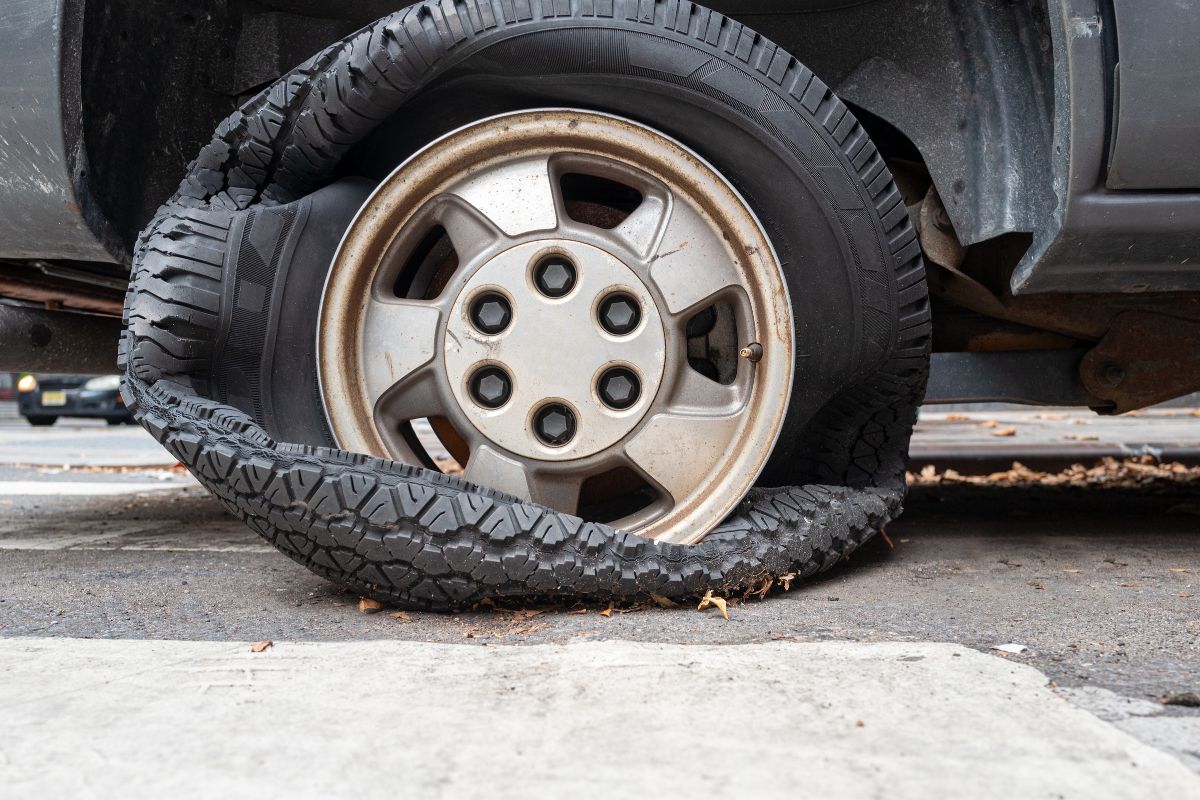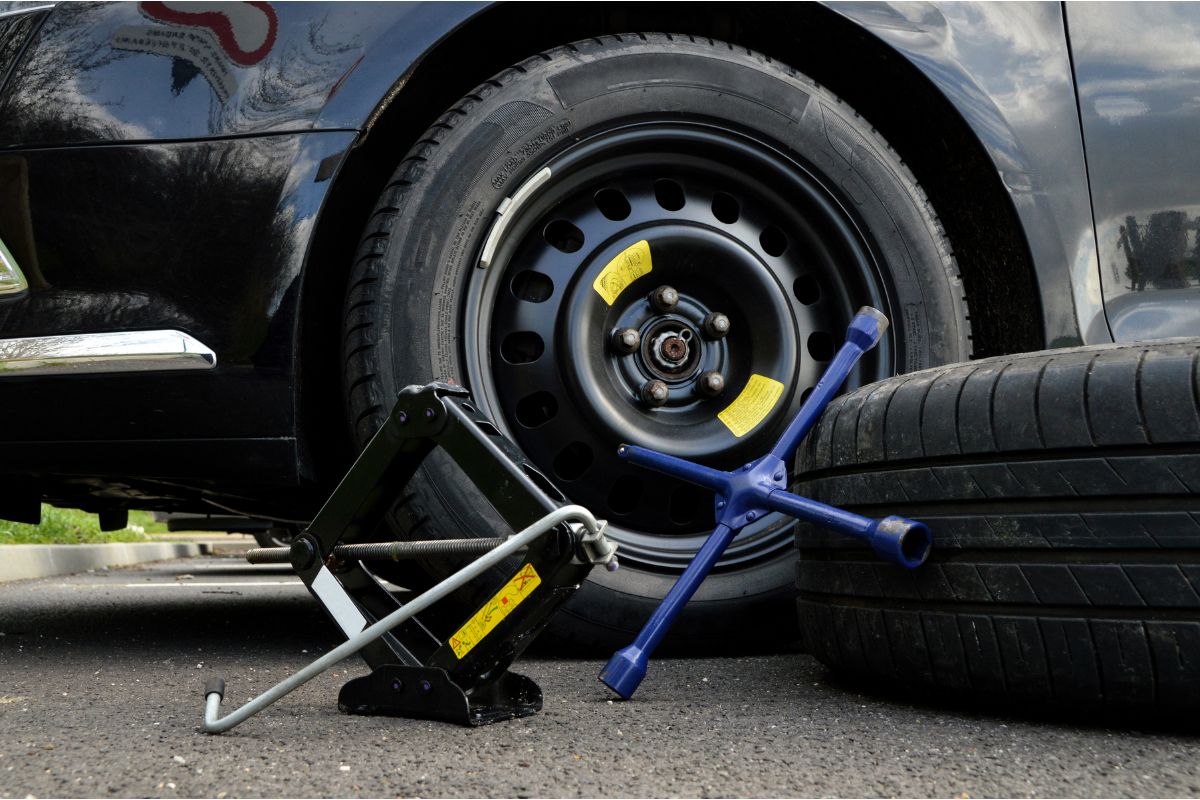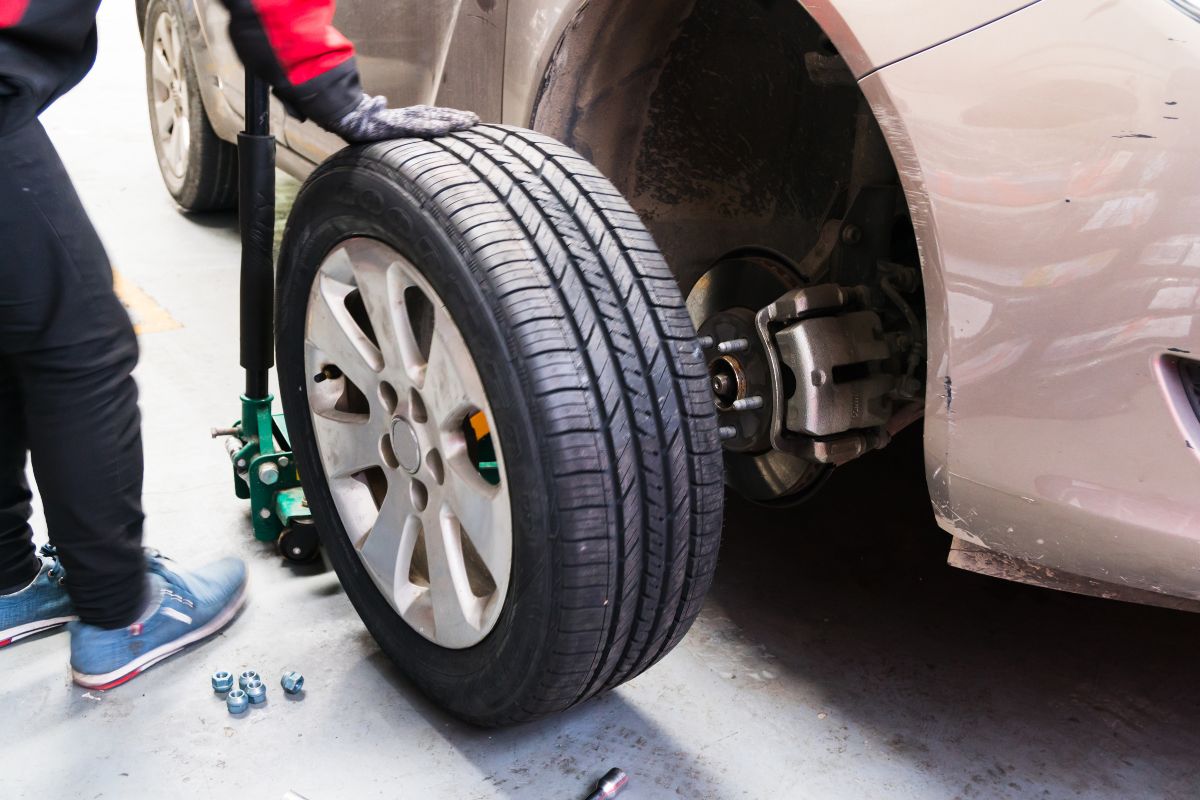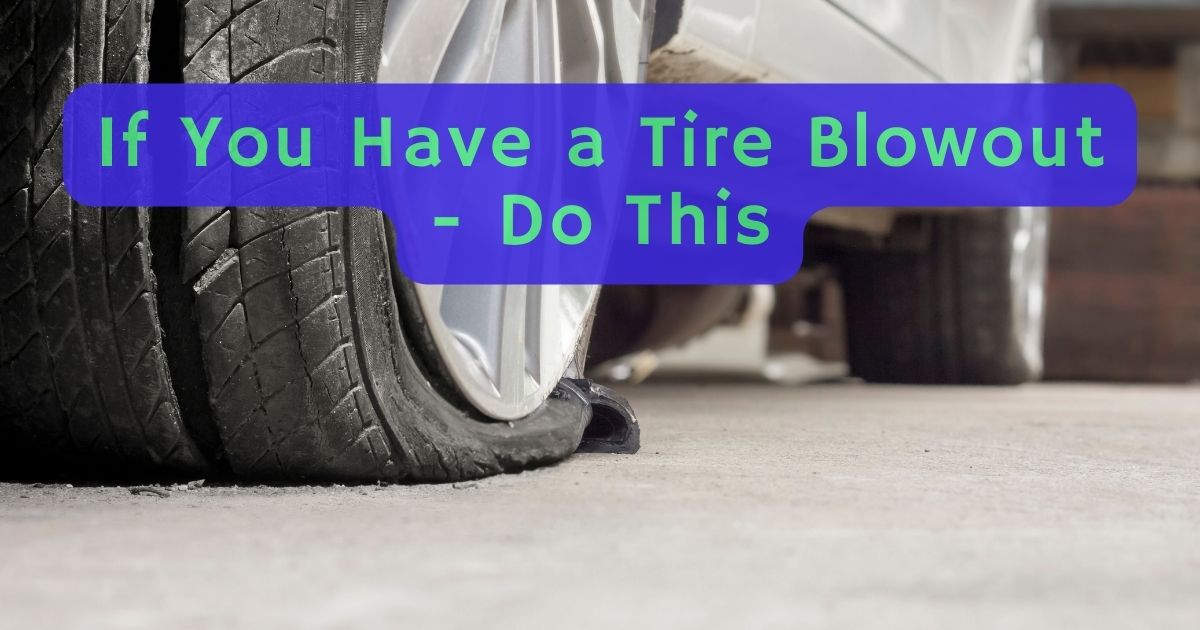What is a Tire Blowout
A tire blowout is busting the wheel’s outer rubber section, resulting in a total loss of air in the inner part. If you have a tire blowout, it may primarily be due to too low pressure inside. In many situations, people think that tire blowouts happen due to excess pressure, but in reality, it’s entirely the opposite.
Let’s go further:

What Happens if You Have a Tire Blowout
Once you have a popped tire, you may immediately notice the rare side of your vehicle pulling to one side. On other occasions, the car may slow down slowly and come to a complete stop. In a worst-case scenario, if you have a tire blowout, you may immediately lose control of the whole vehicle, thus posing a threat to lives.
Things to Do If Your Tire Blows Out
While driving, you already know that if you have a flat tire on the highway, it may lead to further problems like damaging the vehicle or causing minor to severe injuries to everyone on board. Because of such reasons, what should you do if your tire suddenly blows out? Below is a list of several things that you may do to take control of a tire blowout while driving:
- Know when your tire has blown out.
- Keep your vehicle on the road.
- Get to a safe place.
Know When Your Tire Has Blown Out
You first need to listen for any telltale sign to know when your tire popped. In most cases, three powerful sounds indicate a tire blowout. All these sounds take place in rapid succession.
The first sound is a loud boom, then a whooshing sound. The speeding whooshing sound results from air running out inside the tire. A flapping sound follows as all the air leaves and the tire hits and settles on the road.
You also need to look out for steering position changes since it is a sign among things that happen if you have a tire blowout. In many cases, the steering wheel may become too stiff and difficult to steer once a tire blows out. You may notice the steering wheel becoming stiff when you have a slower tire blowout. In slower tire blowouts, the noise from the tire is minimal.
You also need to look out for the vehicle’s behavior in general. The car may drag to the side with the faulty tire in most scenarios. This indecision is the main in terms of signs regarding a tire blowout.
Keep Your Vehicle on the Road
The second thing to do during a tire blowout is to ensure your vehicle remains steady on the road. You must ensure that you prevent flipping, fishtailing, or swerving.
If you lose your lane, you must maintain a firm grip on the steering wheel. Your hands must always be at 10 and 2 positions. You should also avoid hitting the brakes in attempting to stop the car.
In every tire blowout case, slamming the brakes is the most dangerous action to take. Your vehicle may quickly lose control and potentially roll over, leading to a more catastrophic incident. Instead of rushing to the brake pedal, your feet must always remain on the gas.
Increasing your speed means that you may get more time to check on the situation and figure out the right move to take. Practically, pressing the gas pedal more may not increase your vehicle’s speed since you will have a flat tire. Another reason for pushing the gas pedal is to prevent you from attempting to press the brake, causing an accident.
If you have a tire blowout, You need to allow the dragging effect from the faulty tire to slow down your vehicle naturally. The immense weight your car gets from the blown-out tire is enough to bring you to a safe standstill. The faulty tire may slow down the vehicle even with a full press on the gas pedal.
Get to a Safe Place
As you prepare to come to a complete stop, you need to use your emergency lights to inform other road users that you have a problem with your vehicle. After managing to bring your car to a good slower speed, you now need to find a safe side to stay on so that you may figure out fixing the tire blowout since it is better to have a flat tire on the side of the road.
Switch on your turning signal depending on the side you select to park. Before you turn, ensure that your speed ranges around 30 mph (48 km/h). Waiting until your rate is even lower may be much more beneficial and safer. Once your speed is more favorable, you may now begin turning your steering wheel to the side you choose.
As you head for a complete stop at the side of the road, you still need to be extra careful. Remove the foot out from the gas pedal. During this time, the blown-out tire will bring the vehicle to a complete stop. Make sure you are entirely safe on the side of the road before you open the door. If you have any passengers inside, they should follow this procedure too.
Most people have roadside assistance insurance. If you also have this kind of insurance, you may contact them for help via a phone call. You may also call a friend or any other motorist on the road who may be willing to lend a hand. If you don’t get any external help, you may change this tire solo in a few minutes.
Commonly, some people get injuries while changing tires that have blown out. In most cases, these injuries result from dangerous pieces of metal or glass sticking out on the tire sections. Because of such a reason, it is essential to use protective gear like gloves to be completely safe when handling a popped tire.

Why Do Tires Blowout
Why do tires blow out? You may ask yourself this question once the incident happens. Several factors may cause tires to blow out. Below are some of the main reasons why you may experience tire blowouts:
- Overload of tires
- Heat build-up
- Bent wheels
Overload of Tires
You need to always be keen on the amount of weight that you add to your vehicle. Unfair distribution of cargo in your vehicle subjects too much pressure to the wheels. This move may cause a blow-up in the end.
You should also look at the weight of the individual tires before carrying any extra weight. Being sure about the weight of the tires and the cargo to carry assures you of longer-lasting tires.
Heat Build Up
The build-up of heat carries the most significant percentage of tire blowouts. After parking your vehicle, the temperature drops, but the car heats up when you come back to take your vehicle out.
As your car heats up, the tires usually begin to gain heat. The sudden change in tire temperature may cause the tire to blow out. Driving at the wrong PSI level may also increase the chances of your tires heating up since you will be overworking them.
Bent Wheels
Bent wheels mostly happen in trailers of RVs. Once this scenario occurs, the tire’s internal sections may suffer and get tears and rips. This scenario may occur if you drive at high speed.
Ways to Avoid RV Tire Blowout
Preventing your RV from suffering a tire blowout is not that difficult. You may do various things, and be sure to drive a safe RV. Below are some of the main things to do:
- Watch the weight of your RV
- Check on your tire pressure
- Beware of your route
- Avoid too much heat
- Change old tires
Watch the Weight of Your RV
Putting much weight on your RV may lead to a tire blowout. Always check your owner’s manual for Gross Vehicle Weight Rating (GVWR). This manual gives you all the information you need about the total number of people and the cargo your RV can carry.
You should only carry up to the capacity that the manual indicates. Always be mindful of any other addition to the cargo. The extras include even the most minor things like water jugs.
Check on Your Tire Pressure
Improper pressure on the tires is among the leading causes of tire blowouts, especially in RVs. The sidewall of the tires usually flexes a little more than usual when the tire pressure is lower than average. The low pressure may cause the cords inside the tire to melt, leading to a tire blowout.
On the other hand, high pressure leads to a loss of traction on the wheels. If your tires lose traction, you may have problems while stopping the vehicle, thus causing tears to the wheels. The torn effect may lead to a tire blowout as a result.
Beware of Your Route
Natural road conditions may also lead to tire blowouts. Potholes may cause considerable damage to RVs even if you carry less cargo. The force from hitting a pothole may lead to sudden bending of the sidewalls.
Because of such a reason, make sure you have a little knowledge about the road you are about to take. You may change your route depending on the cargo that you have on board. Planning out your route may save you from tire blowout struggles.
Avoid Too Much Heat
During summer, the heat from the surrounding may combine with the heat coming from your vehicle and lead to a tire blowout. Driving at high speeds may worsen this situation since you will subject more heat to your tire. Because of this reason, always prevent heat build-up by operating at lower speeds.
Also, remember to take breaks in between the journey to allow the tires to cool a little. It would also be wise to drive on roads with grass since they absorb less heat from the hot summer sun.
Change Old Tires
After around three to six years, you need to change the tires of your RV. Going further, you must not exceed ten years. The tires may last longer depending on your RV use. The method you use in storing your RV also matters.
You need to constantly check your tires for any signs of cracks, bumps, or wavy looks to be up to date. When the time for changing the tires comes, it is wise to go for new tires so that you do not get to change them again after a short time.
When to Replace RV Tires
You must observe several factors to know if the time to replace your RV tire has arrived. Below are the main factors that determine the time to change your RV tires has come:
Cracks
Once you age your tires, they may begin forming cracks on different sections, indicating the time has come. To be entirely sure, you need to observe the size of the damages. Some cracks are normal and do not indicate anything. In most cases, such cracks are on the sidewalls of the tires, and they may lead to a tire blowout.
Even tires from the best brands usually develop cracks when they become old. You can be sure about changing tires if the cracks are about 2/32 inches (5/81 centimeters) deep.
Tread Depth
If your tire’s tread depth exceeds 6/32 inches (15/81 centimeters), it might indicate the time to change the tire. You may check the measure of your tread depth yourself or ask an expert to check it for you.
Sign of Wear
Wearing the tire also signals you need to change your tires. You need to check if your tires have any form of uneven wear. You may need to change just a few of the tires if the rest are still in good shape.
Too Much Vibration
While driving your RV, it may be difficult to notice any vibrations from the wheels. However, if you see such kinds of vibration by any chance, it may be due to aged tires that need changing. The lack of balance from these tires means that you need to act quickly to prevent any catastrophic event from a tire blowout in the future.

Summary
Tire blowouts can be irritating since they cut you short from arriving at your favorite destination. If you have a tire blowout, the steps above guide you on how to fix it and prevent any other scenario from taking place in the future.
